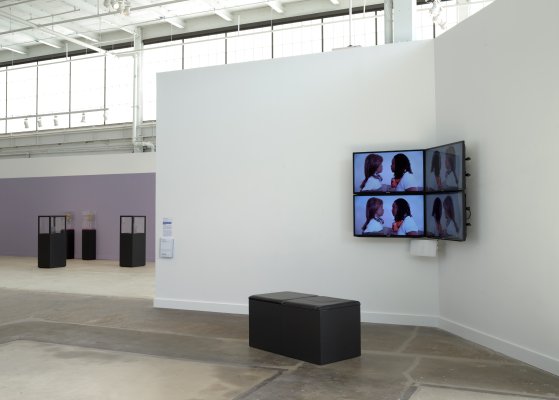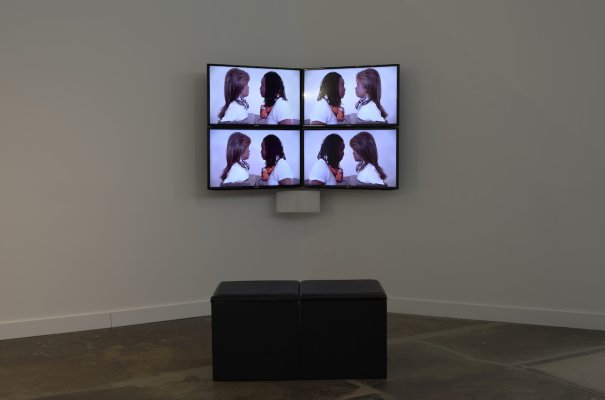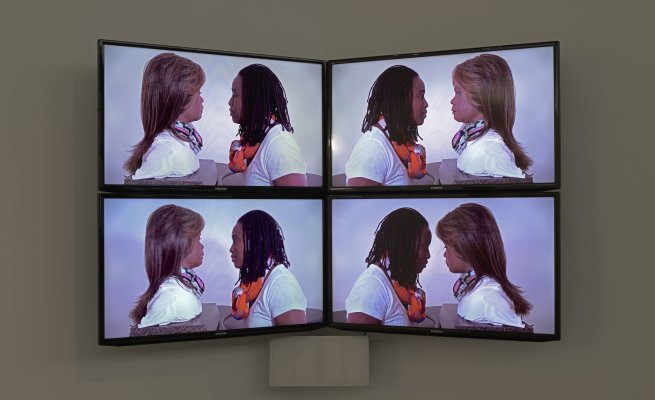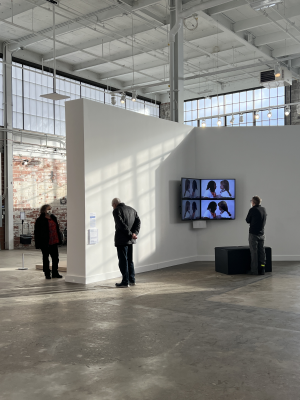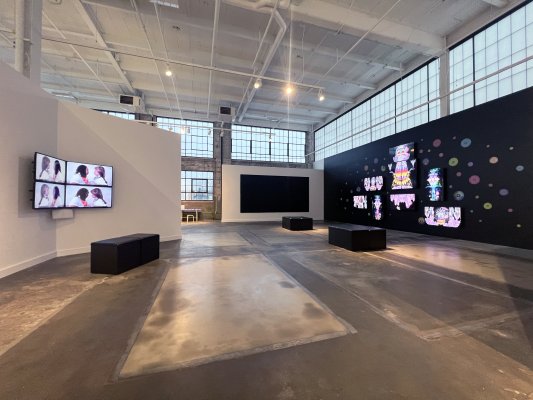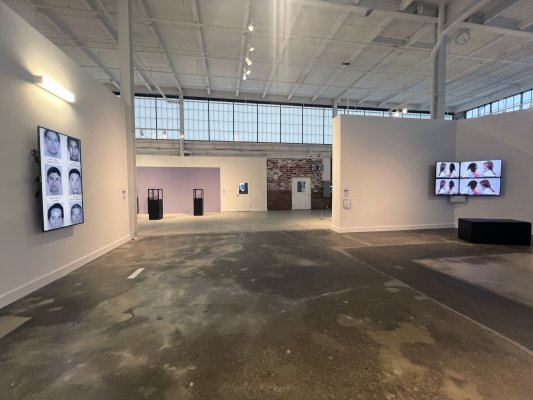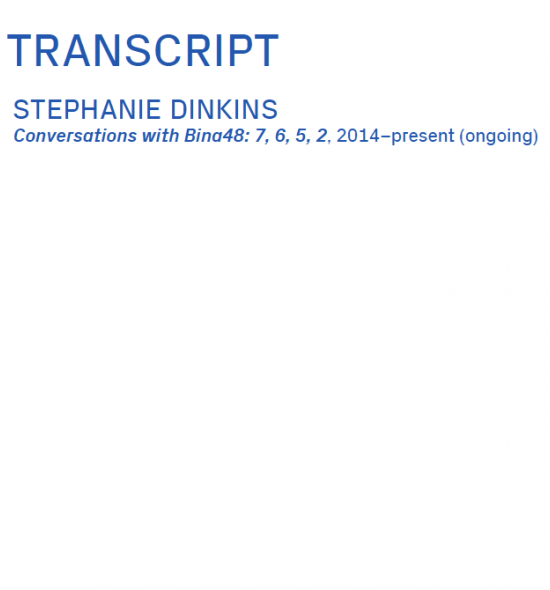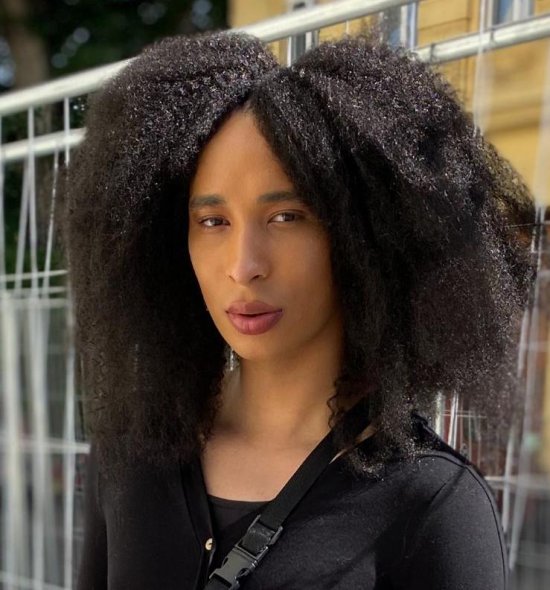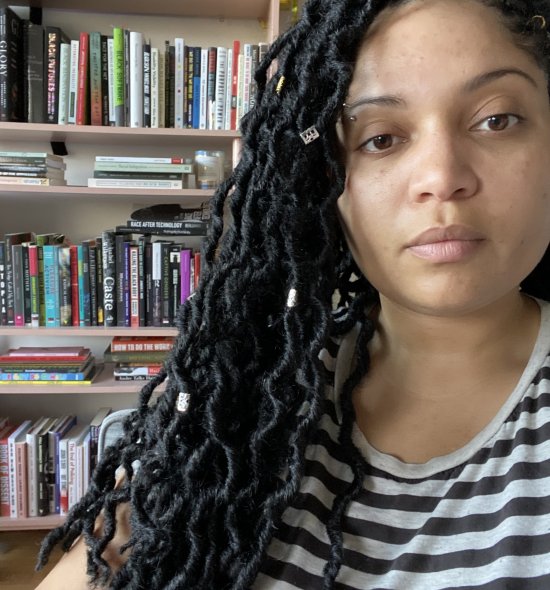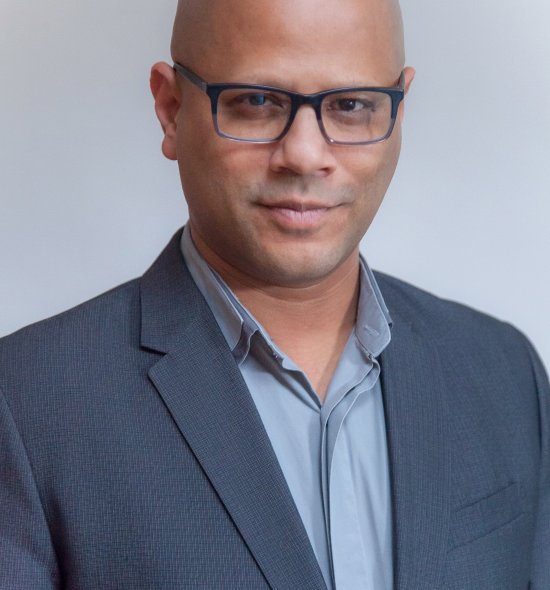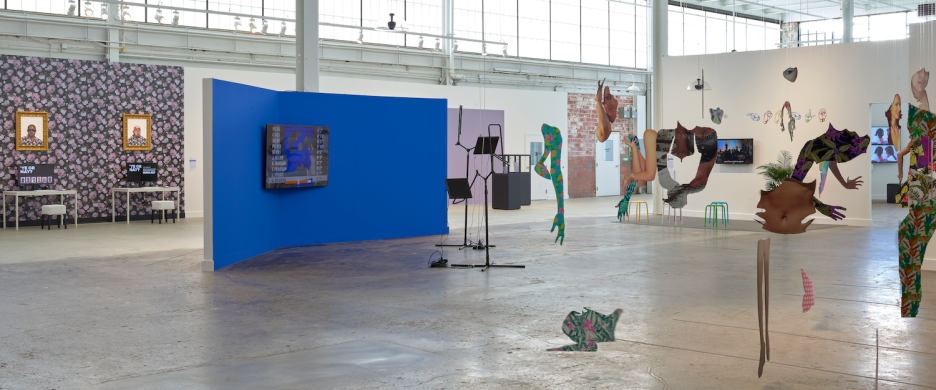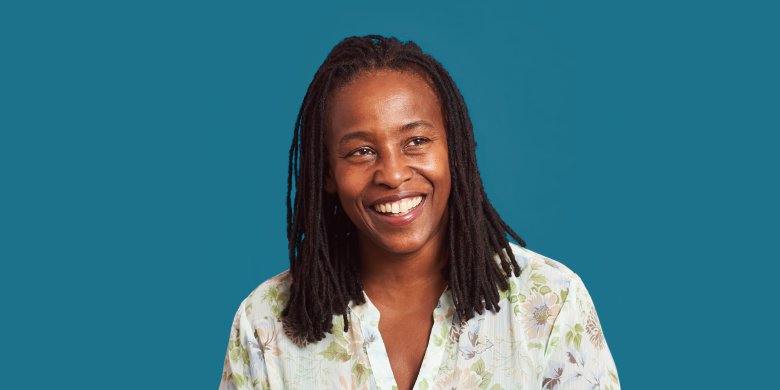Conversations with Bina48: 7, 6, 5, 2, 2014–present (ongoing)
Four digital videos (color, sound) displayed on monitors
Running time: 4 minutes, looped
Courtesy of the artist and TRANSFER
“Conversations with Bina48 is a really special piece for me, because it marks the place in my practice where I made the turn to working with artificial intelligence, and thinking about its impact on the future of the communities that I’m concerned with, and really on the global community.”
—Stephanie Dinkins
In these four videos, we see the artist Stephanie Dinkins (she/her/hers) conversing with a humanoid cyborg called Bina48 (Breakthrough Intelligence via Neural Architecture, 48 exaFLOPS per second). Bina48’s face is modeled after Bina Rothblatt, a co-founder of the Terasem Movement Foundation, which promotes the transhumanist idea that we will one day upload our minds into robots or clones. When asked questions, Bina48 uses voice recognition and artificial intelligence to generate answers based on the real Bina’s recorded ideas and memories.
Dinkins positions herself in these videos as a kind of mirror of Bina48: she wears similar clothing, mimics her movements, and speaks to her face-to-face, as if looking at her reflection. This doubling may prompt us to think about what it means to be human at the dawn of AI, especially for marginalized people who have been considered subhuman. By asking Bina48 about topics like racism and civil rights, Dinkins points out that our technologies may help us transcend our bodies but not our prejudices. For example, digital assistants that are programmed to sound like educated white women, such as Siri and Alexa, reinforce the idea that these women are nonthreatening and submissive. In contrast, Bina48 is a futuristic technology modeled after a Black woman, much like the “Oracle” character in the Matrix films. Whether and how Bina48 could ever become fully “human” is up to the viewer to decide.

